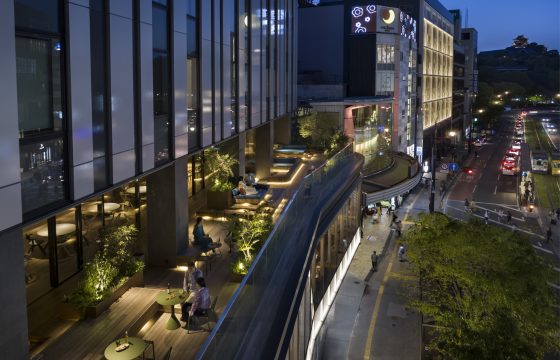8 recommended sightseeing spots in Kumamoto City, from the classics to hidden gems

Kumamoto City is a city with a rich history and culture, with Kumamoto Castle at its center. The culture left behind by the Kato family, who developed the castle town, and the Hosokawa family, who established the vibrant Higo culture in Kumamoto after the Edo period, can still be seen throughout the city today. We will introduce you to major tourist spots and more off-the-beaten-path spots where you can experience the deep charm of Kumamoto.
1Kumamoto Castle
A famous castle that has been watching over the city of Kumamoto for over 400 years
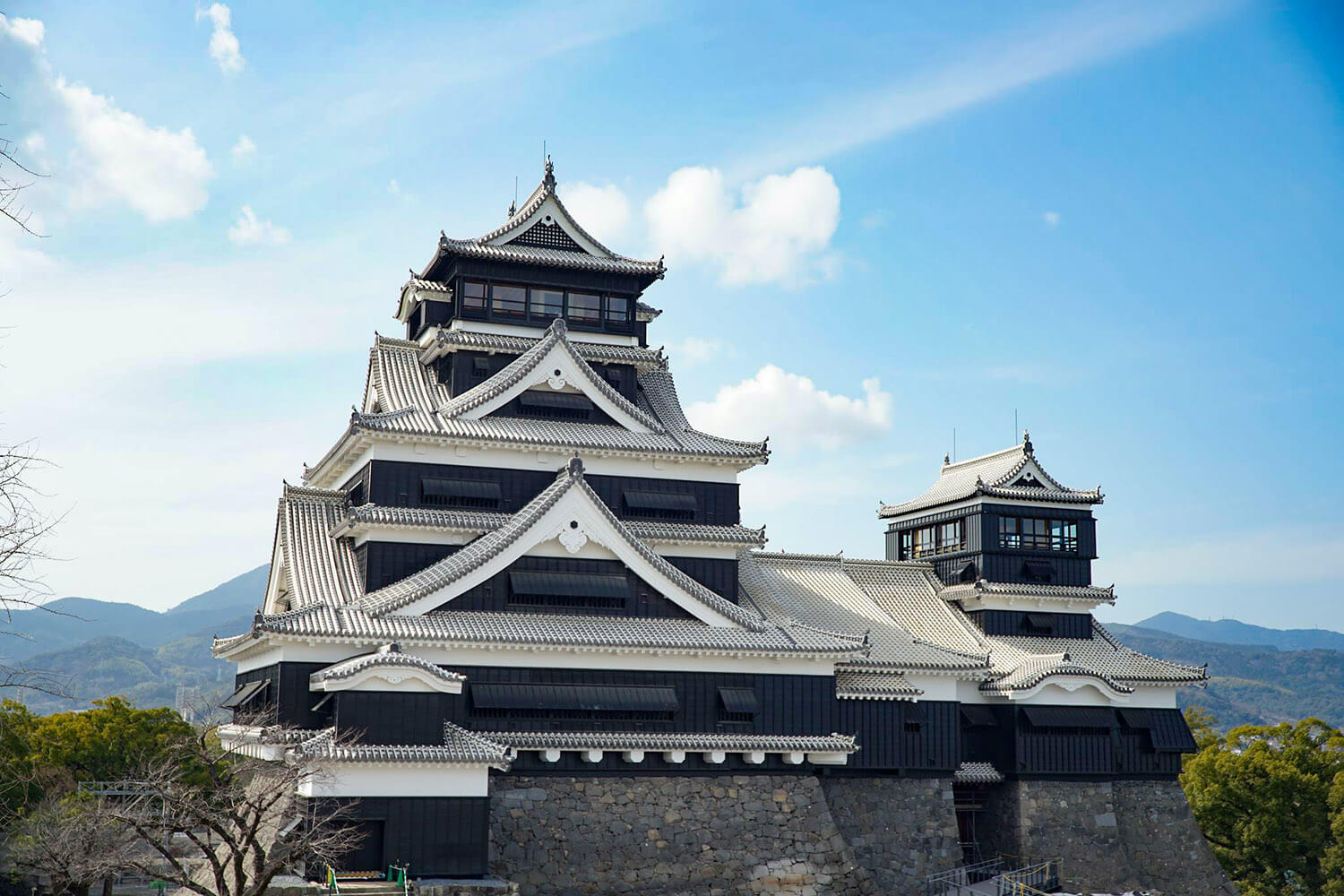
Kato Kiyomasa, who built the foundation for the nation of Kumamoto, is affectionately known locally as "Lord Kiyomasa," and the Kumamoto Castle he built is counted as one of the three most famous castles in Japan.
Kumamoto Castle is characterised by its vast grounds, covering an area of 98 hectares and a circumference of 5.3km. The castle tower has chidorihafu (plover gables) on two sides and irimoyahafu (hip-and-gabled gables) on the other two sides, with elegant karahafu (cylinder-shaped gabled roofs) on the north and south sides of the top floor. The stone walls, which could be said to be the castle's greatest feature, are also nicknamed "Musha-gaeshi" (warriors' return) because of their uniquely sloping design that made them difficult for even samurai to climb. You can get a glimpse of the pride of Kato Kiyomasa, a master castle builder, who brought together the latest civil engineering and architectural technology of the time.
The history of Kumamoto Castle, full of turmoil and glory, is explained through exhibits
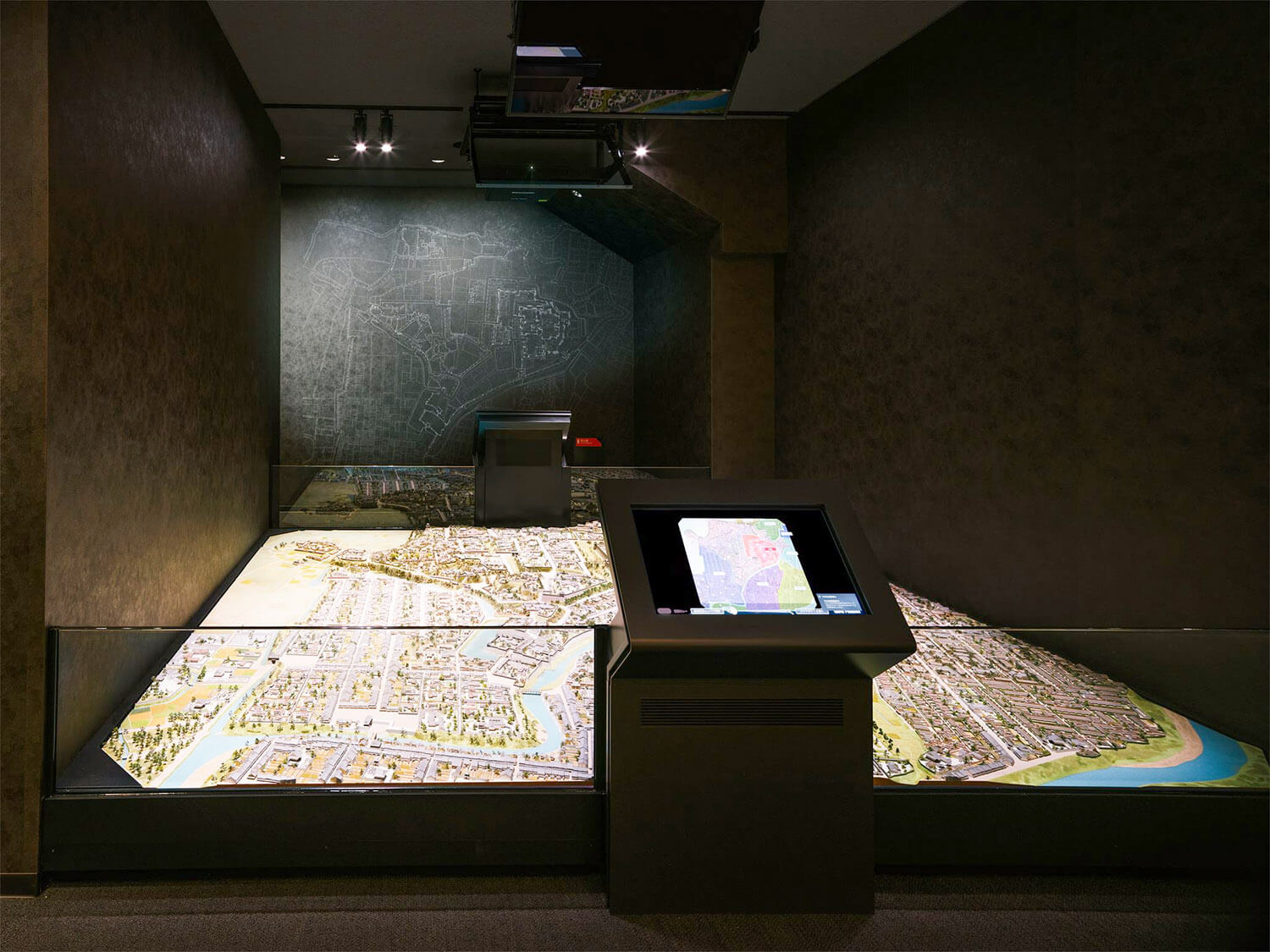
Kumamoto Castle suffered extensive damage in the 2016 Kumamoto earthquake, including the collapse of stone walls and falling roof tiles from the castle tower. After restoration work, the interior of the castle tower was reopened to the public in June 2021. As of 2023, a variety of exhibits have been installed inside the castle tower, and visitors can learn about the castle's progress from its construction to the present day through models and videos. In addition, the special observation passage, which offers a close-up view of the progress of the castle's recovery from the earthquake disaster, is packed with many things to see.
In addition, the view looking up at the castle from the streetcar-running street known as Train Street (Prefectural Route 28) is the epitome of Kumamoto.
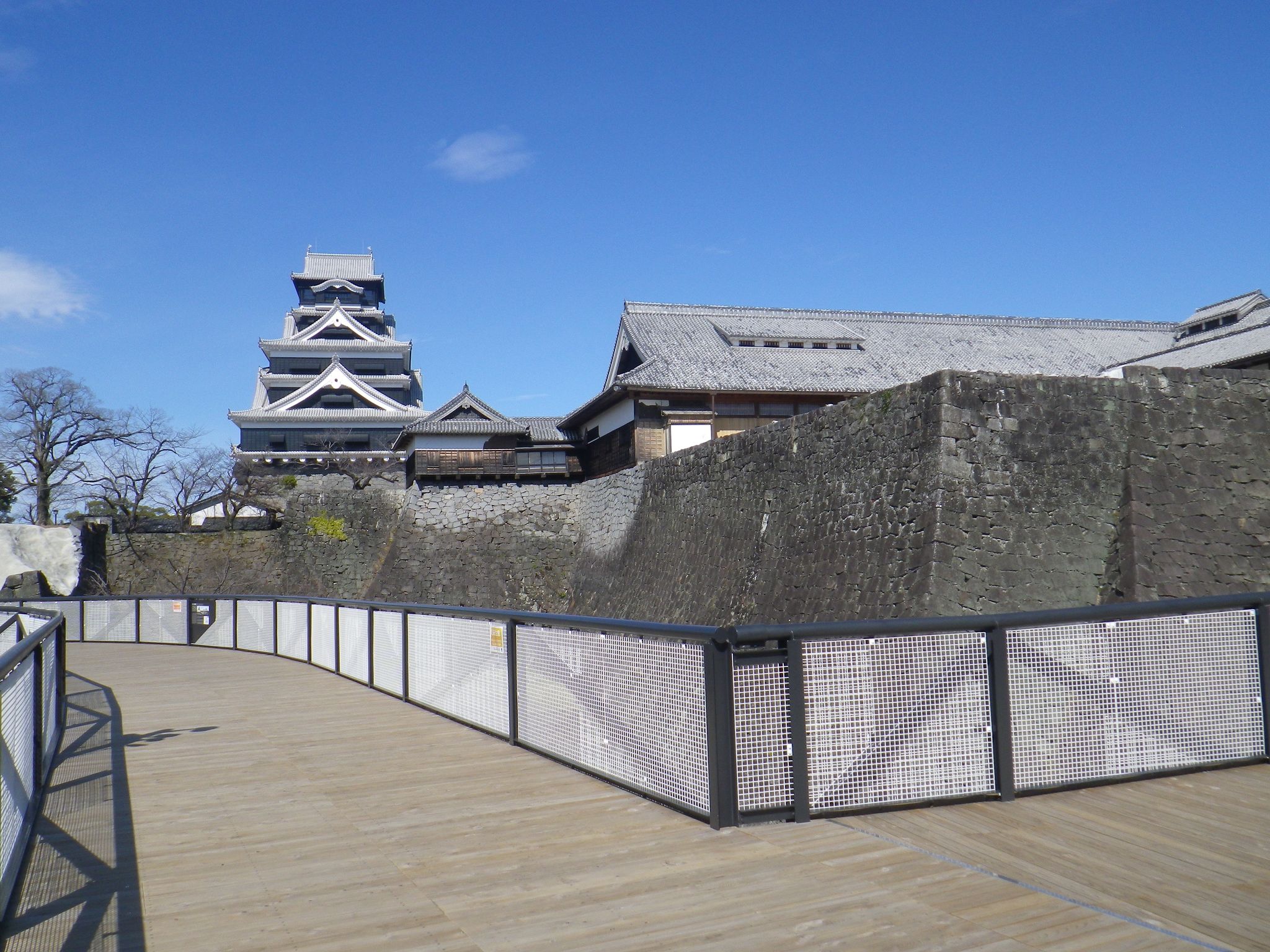
- Kumamoto Castle
-
 1-1 Honmaru, Chuo-ku, Kumamoto City, Kumamoto Prefecture MAP
1-1 Honmaru, Chuo-ku, Kumamoto City, Kumamoto Prefecture MAP
 About 10 minutes walk from Kumamoto Castle/City Hall Station on the Kumamoto City Tram
About 10 minutes walk from Kumamoto Castle/City Hall Station on the Kumamoto City Tram Take the bus (Kumamoto Castle sightseeing bus "Shiromeguri") from JR Kumamoto Station and get off at "Sakura no Baba Josaien"
Take the bus (Kumamoto Castle sightseeing bus "Shiromeguri") from JR Kumamoto Station and get off at "Sakura no Baba Josaien" 9:00-17:00 (last admission 16:30)
9:00-17:00 (last admission 16:30) December 29th (subject to change)
December 29th (subject to change) Admission fee: 800 yen for high school students and above, 300 yen for elementary and junior high school students, free for preschoolers
Admission fee: 800 yen for high school students and above, 300 yen for elementary and junior high school students, free for preschoolers 096-352-5900(熊本城総合事務所)
096-352-5900(熊本城総合事務所) Paid
Paid
2Suizenji Jojuen Garden
A picturesque garden that conveys the Higo Hosokawa culture to the present day

This stroll-style garden has been designated as a national scenic spot and historic site. It is said that it began in 1632 (Kan'ei 9), when Tadatoshi Hosokawa, the first lord of the Kumamoto domain, fell in love with this place with its gushing clear water, and built a teahouse here.
As you step into the garden, the first thing that catches your eye is the picturesque beauty of the garden. The garden is centered around a pond fed by underground water from Mt. Aso, and features an artificial hill shaped like Mt. Fuji and well-maintained trees. The elegant appearance and the pure air in the area make it a popular place of relaxation for local residents.
The beauty of the spring water and the seasonal changes in the flora add color to your stroll.
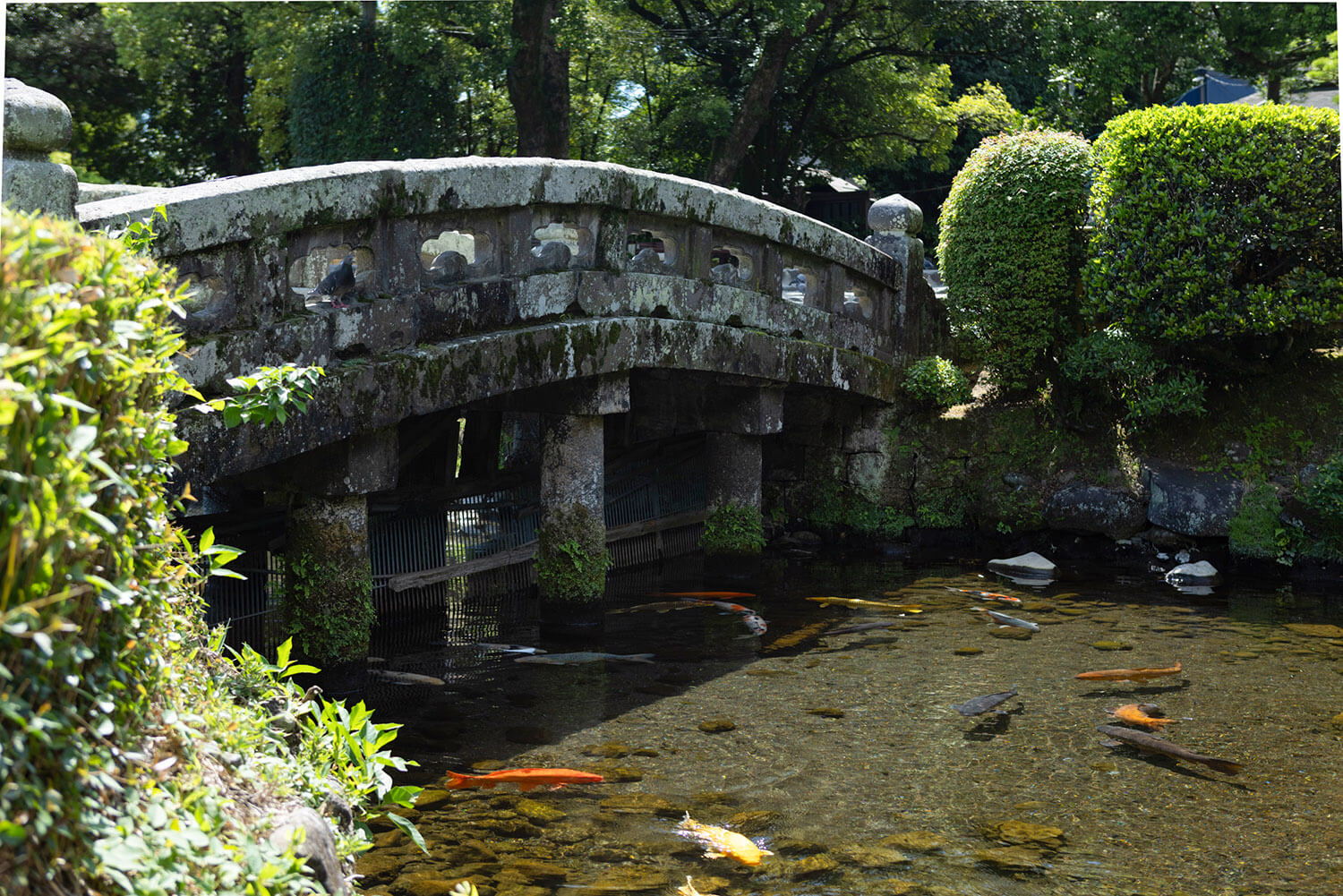
Within the park, you can enjoy a leisurely stroll, visiting the Izumi Shrine, which enshrines the successive feudal lords of the Hosokawa clan, the Noh Theater, where Shinto Noh performances are dedicated to the spring and autumn festivals, and even an area where the Higo Rokka flowers, unique to Kumamoto, such as the Higo camellia and Higo chrysanthemum, are in full bloom.The view of the garden from the Kokindenju Room, which was moved from the Kyoto Imperial Palace in 1912 (Taisho 1), is especially famous for its beauty.
Furthermore, from late March to early April, the cherry trees planted along the walking paths will be in full bloom, painting the garden in a pale pink hue, making the scenery even more beautiful.
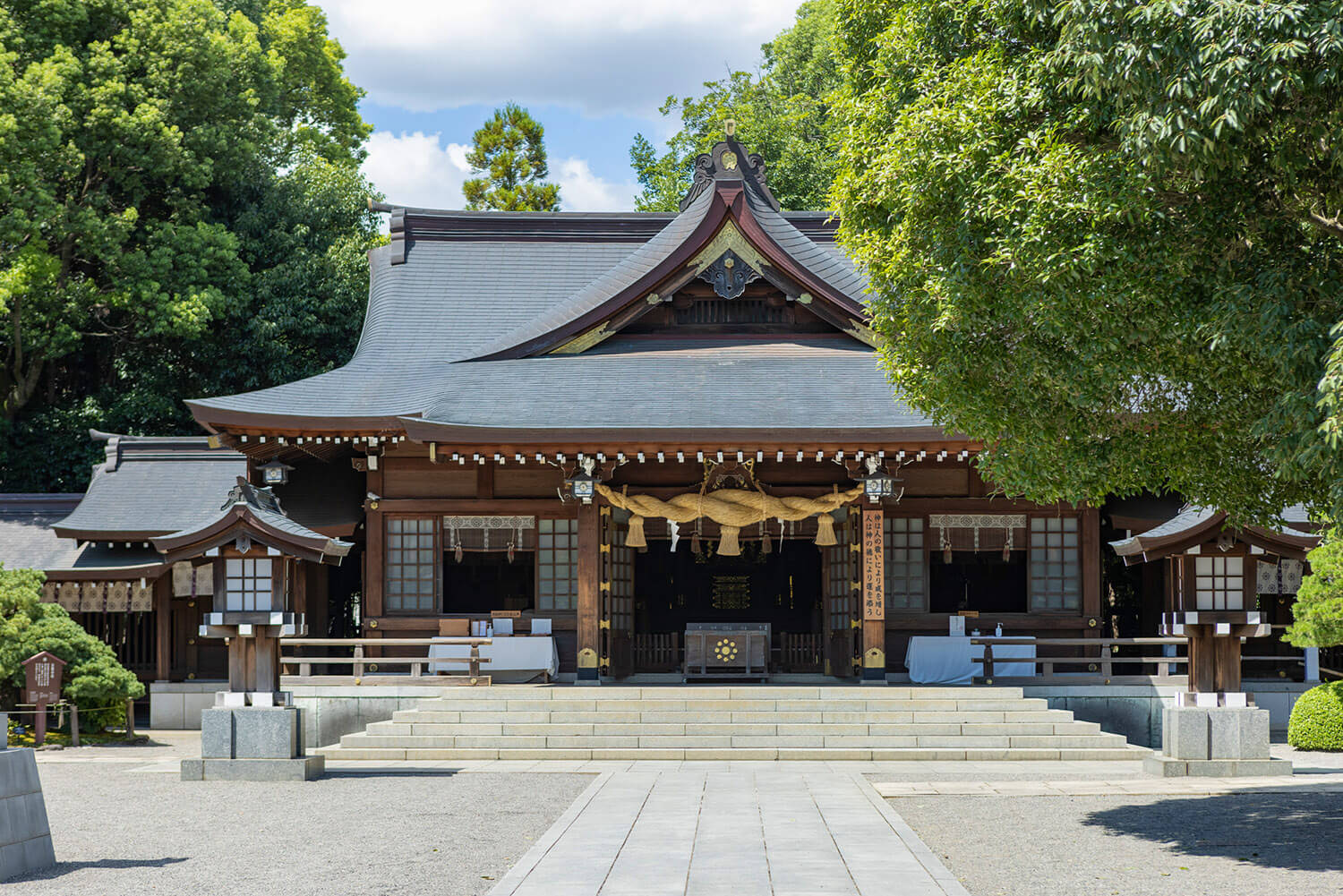
- Suizenji Jojuen Garden
-
 8-1 Suizenji Park, Chuo-ku, Kumamoto City, Kumamoto Prefecture MAP
8-1 Suizenji Park, Chuo-ku, Kumamoto City, Kumamoto Prefecture MAP
 About 3 minutes walk from Kumamoto City Tram "Suizenji Park" Station
About 3 minutes walk from Kumamoto City Tram "Suizenji Park" Station 8:30-17:00 (last admission 16:30)
8:30-17:00 (last admission 16:30) Open daily
Open daily 16 years and over: 400 yen, 6 to 15 years old: 200 yen
16 years and over: 400 yen, 6 to 15 years old: 200 yen 096-383-0074
096-383-0074 None
None
3Shinmachi and Furumachi
Two distinctive areas that prospered as castle towns

The Shinmachi/Furumachi area, located between Kumamoto Castle and Kumamoto Station, is a castle town built by Kato Kiyomasa at the same time as he constructed Kumamoto Castle, and still retains many traces of its former glory.
Shinmachi is located in front of Kumamoto Castle, and is a rare area in Japan where samurai residences and townspeople coexisted. There are many long-established stores still in business, such as Yoshida Shokado, a pharmaceutical wholesaler that has been in business since the 1830s, and Hyogoya Honten, a soy sauce and miso manufacturer and retailer founded in 1715 (Shotoku 5). There is also the remains of Okyakuya, where Sakamoto Ryoma and Saigo Takamori are said to have stayed, so you can get a deeper understanding of Kumamoto's history by walking around the area.
The scenery of a historic castle town that continues to change even today
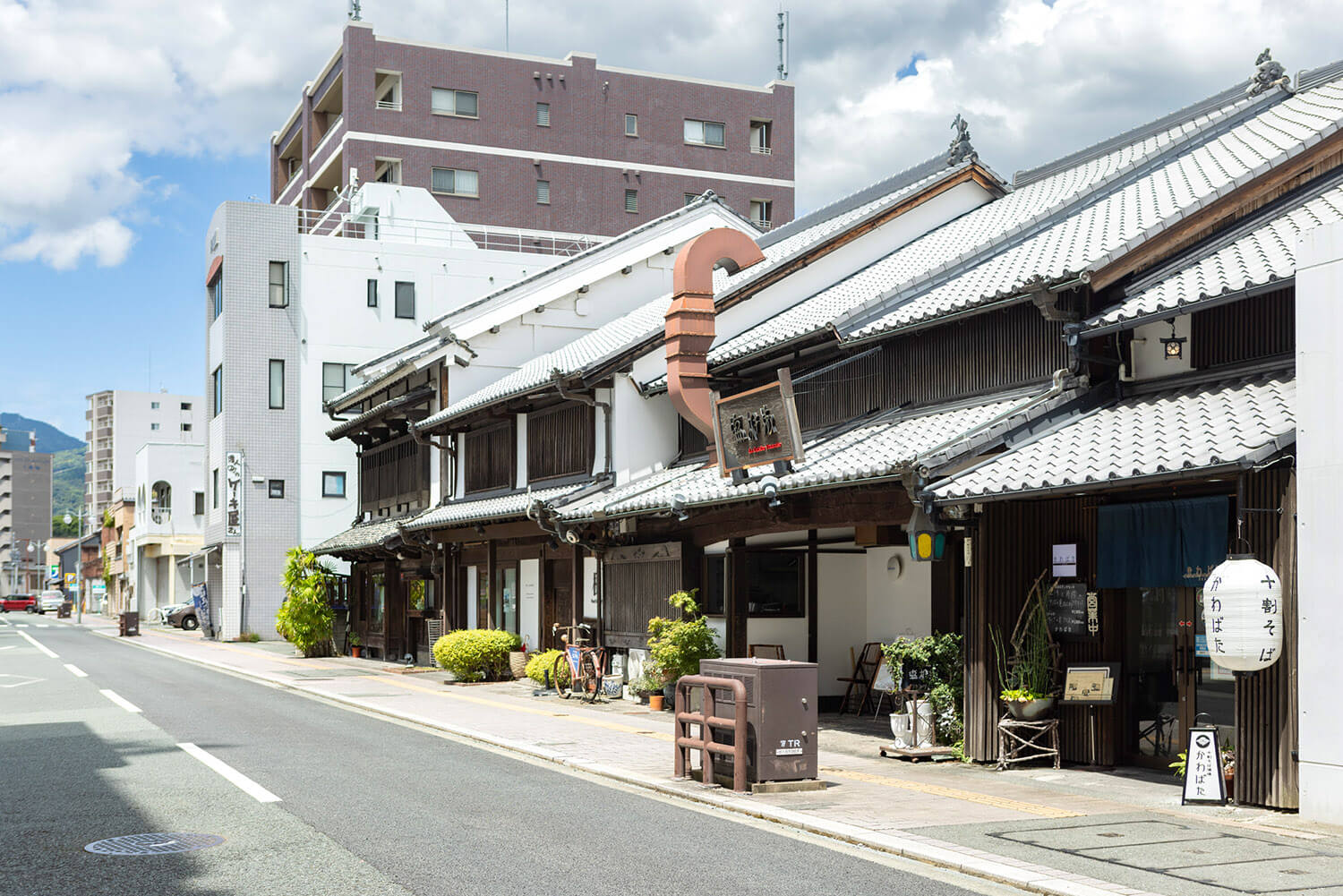
On the other hand, Furumachi is characterized by its "one town, one temple" layout, with a temple in the center of a grid, surrounded by town houses. This ironclad defense was the idea of Kato Kiyomasa, who aimed to use the temple as a defensive base in times of emergency. You can experience this revolutionary town layout for yourself by walking through the town.
Nowadays, cafes and shops are springing up one after another using the townhouses. The Nishimura Residence, a registered tangible cultural property of a merchant's house, has been turned into a gallery and shop, while the Hayakawa Warehouse, a former brewery built in the early Meiji period, has evolved into an event space. With prior reservations, you can also receive a guided tour from a local guide, allowing you to fully experience the atmosphere of the castle town.
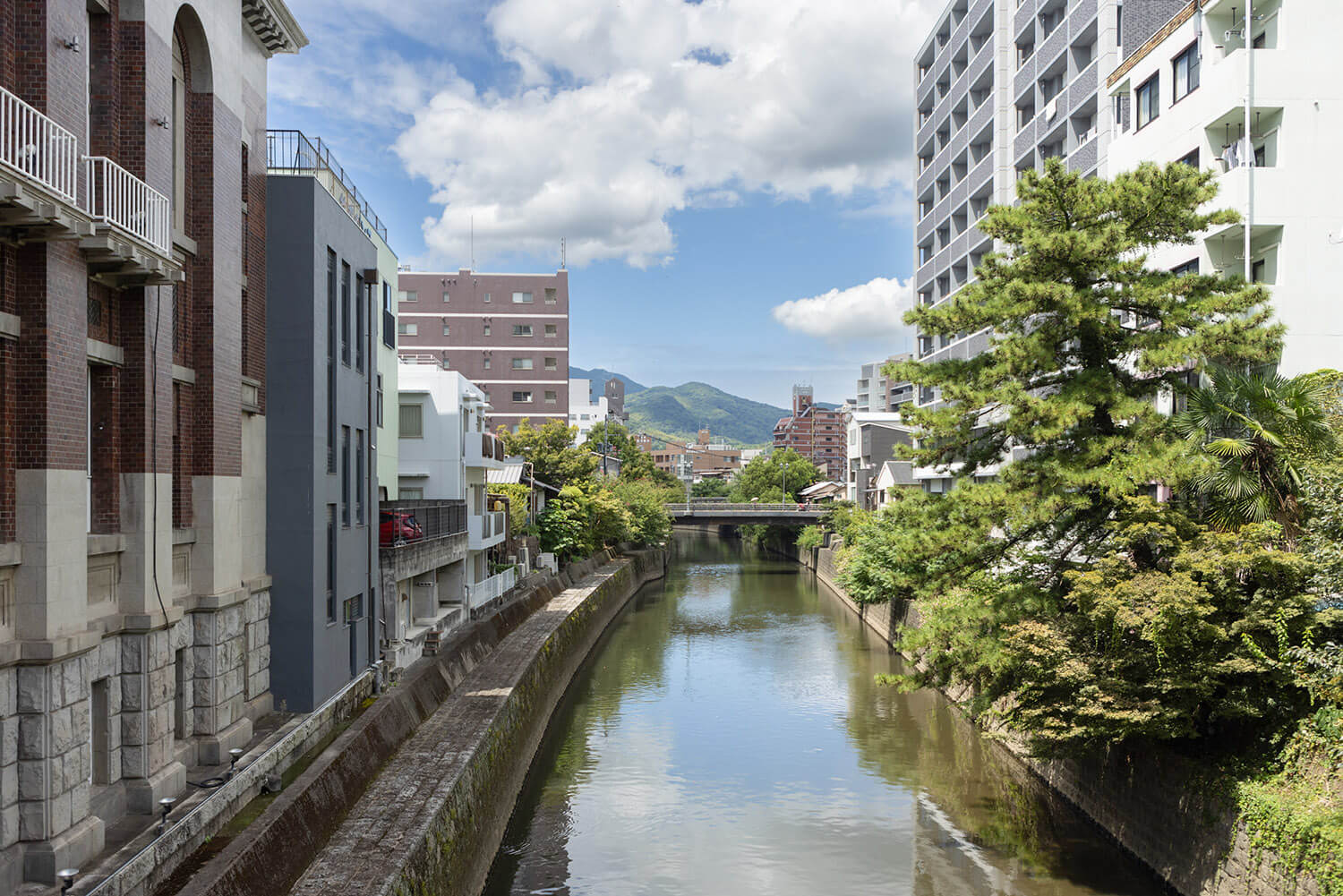
- Shinmachi and Furumachi
-
 Kumamoto Prefecture, Kumamoto City, Chuo Ward, Shinmachi, etc. MAP
Kumamoto Prefecture, Kumamoto City, Chuo Ward, Shinmachi, etc. MAP
 Shinmachi area: Right next to the tram stop "Shinmachi"
Shinmachi area: Right next to the tram stop "Shinmachi"
Furumachi area: Right next to the tram stop "Gofukumachi" まち歩きガイドについてのお問い合わせ
まち歩きガイドについてのお問い合わせ
新町エリア TEL:096-324-4488(肥後象嵌 光助)
古町エリア TEL:096-355-0601(アットブリッジ)https://jokamachi.com
4Kawaramachi Textile Wholesale District
Enter the Showa retro world where time seems to stand still
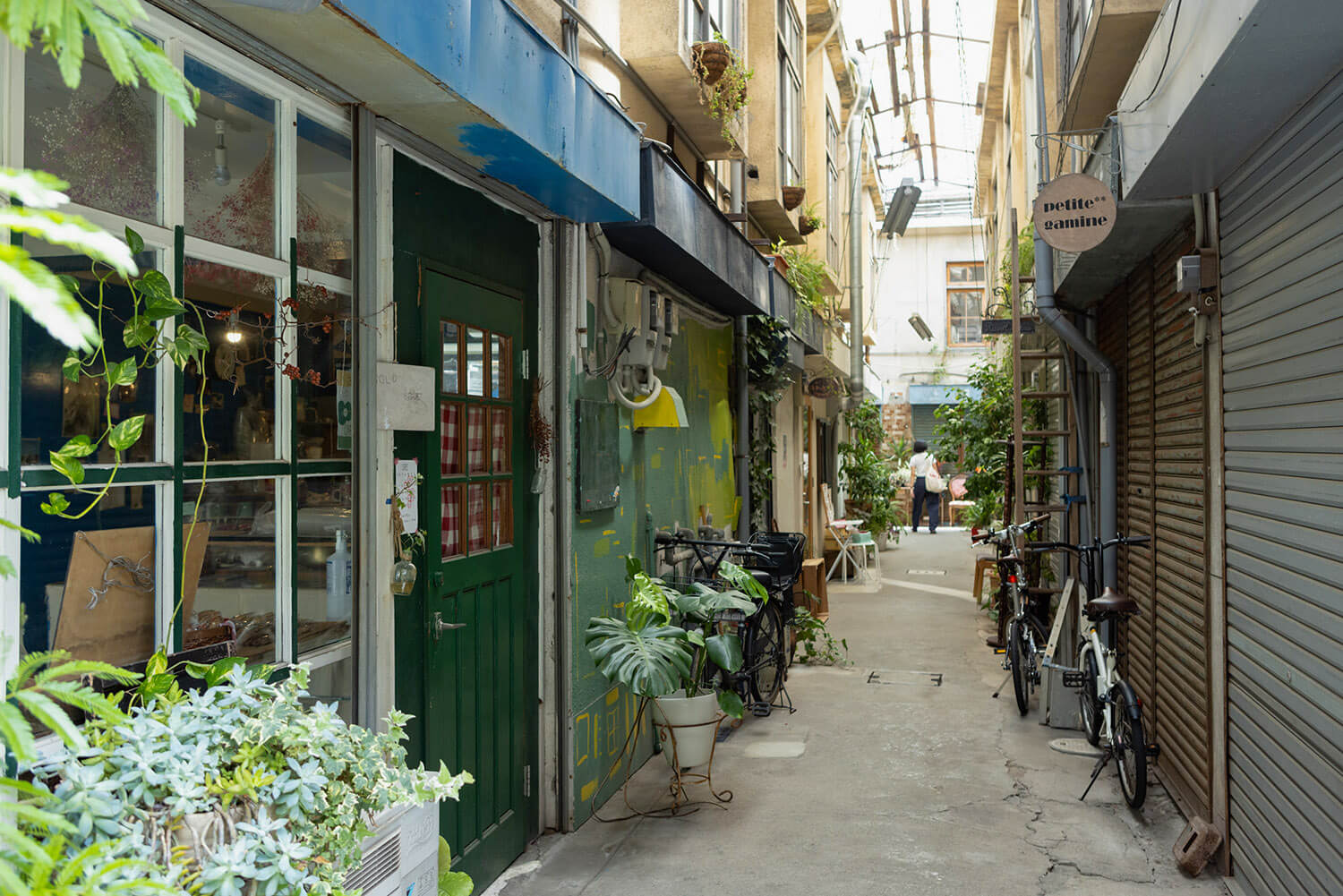
Narrow passageways packed with tenement houses, tin roofs, and tin signs create an atmosphere where time seems to have stopped. This place once flourished as a textile wholesale district.
Originally a joint building built after the disappearance of the street vendor market after the war, it reached its heyday as a wholesale district, after which the textile businesses moved out and vacant buildings became conspicuous. However, in recent years, cafes, general stores, galleries and other establishments have moved in, and the area is slowly regaining its vitality. Furthermore, with the spread of social media, the photogenic retro space and unique presence are attracting more and more visitors.
A nostalgic yet new, photogenic space
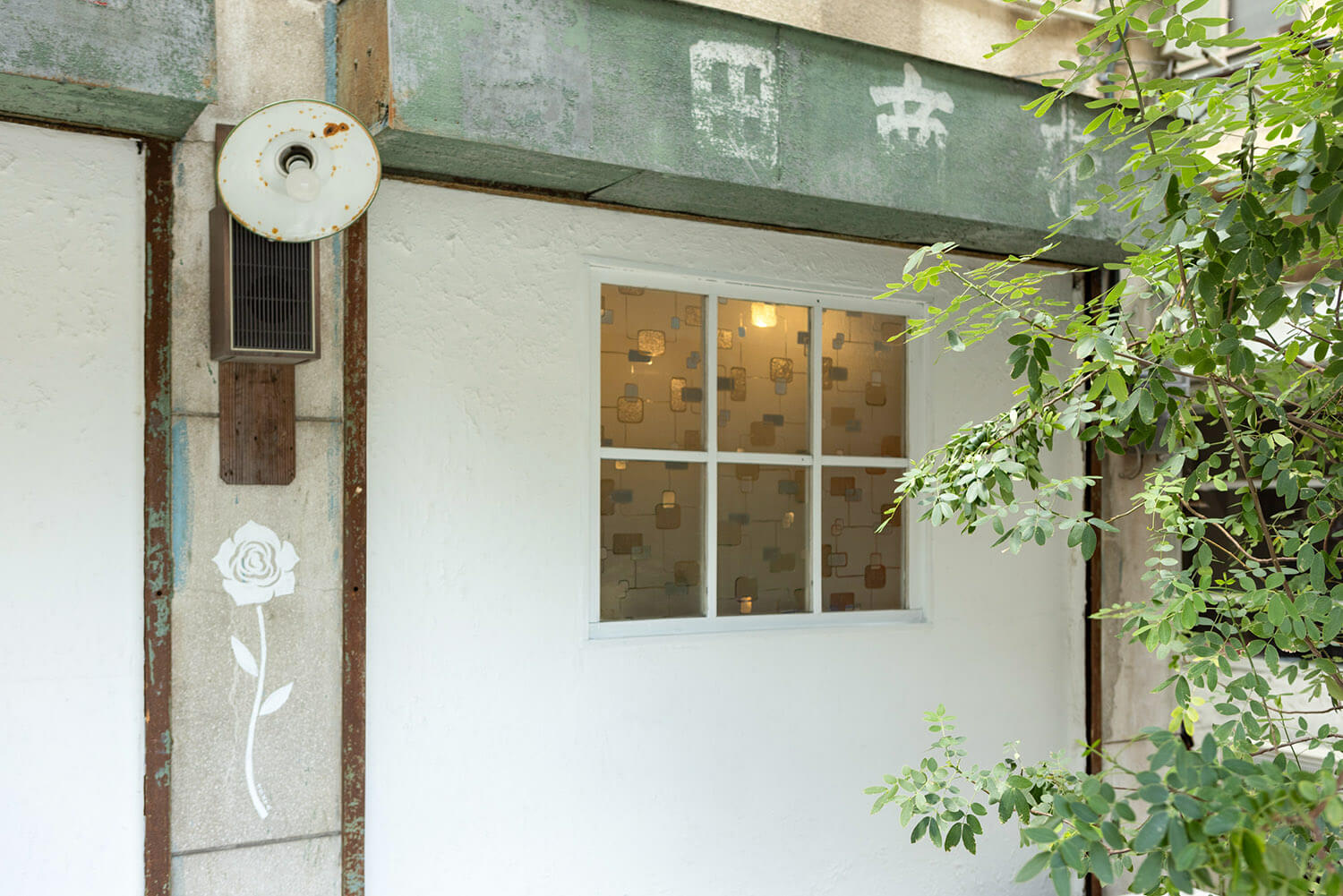
Currently, after repeated renovations and repairs, the building is home to around 20 unique stores and offices. It's also fun to stroll around the narrow passageways at a leisurely pace.
Little by little, lights are coming on in what used to be a deserted area, fostering a unique atmosphere and culture. Every nook and cranny is a picturesque world of Showa retro. Kawaramachi Textile Wholesale District is located in a corner of "Furumachi," so why not stop by when you're strolling around the castle town?
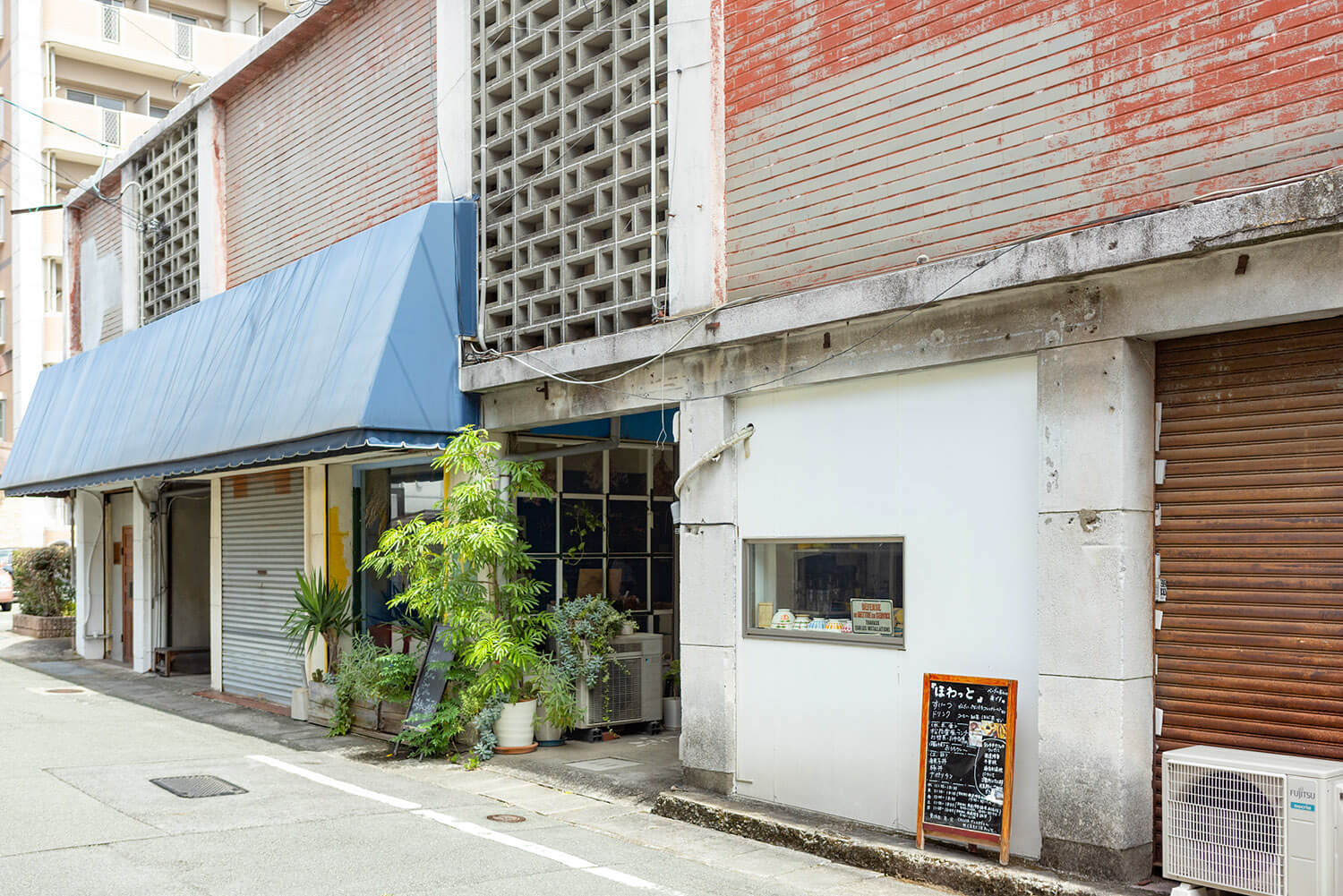
- Kawaramachi Textile Wholesale District
-
 Kumamoto Prefecture, Kumamoto City, Chuo Ward, Kawaramachi MAP
Kumamoto Prefecture, Kumamoto City, Chuo Ward, Kawaramachi MAP
 2 minutes walk from Kawaramachi tram stop
2 minutes walk from Kawaramachi tram stop None
None If you are taking photos of two or more people, you must apply in advance through Instagram.
If you are taking photos of two or more people, you must apply in advance through Instagram.
5Toge no Chaya Park
A reconstruction of the teahouse said to be the setting for Natsume Soseki's novel "Kusa Makura"
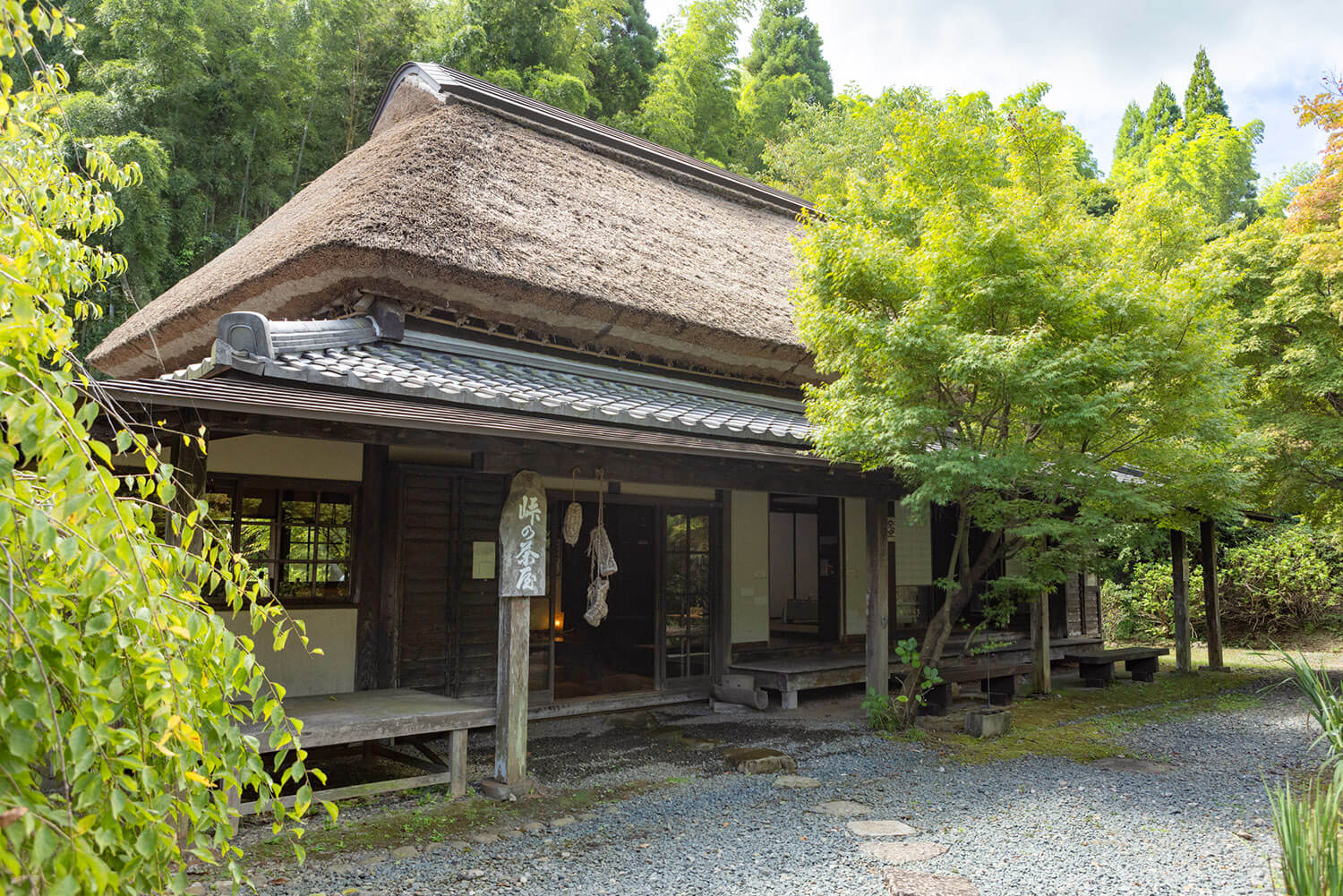
Mount Kinpu is a mountain that symbolizes Kumamoto City. It is said that the great writer Natsume Soseki once passed through Torigoe Pass on Mount Kinpu, and the teahouse that stood here is the setting for a passage in his book "Kusa Makura" that reads, "I called out, 'Hey,' but there was no reply."
Currently, the area has been developed as "Toge no Chaya Park" and the teahouse from the book has been reconstructed. The interior of the thatched-roof teahouse is open to the public free of charge as a museum, where materials related to Soseki are on display. There is also an earthen floor and a Goemon bath, giving visitors a glimpse into life in the past.
You can also try Kumamoto's specialty, Dagojiru.

After immersing yourself in the world of Natsume Soseki at the museum, fill your stomach with a Kumamoto specialty. Just down the stairs from the museum is Toge no Chaya Dagojiruya, a restaurant where you can try Kumamoto's local dish, dago soup. The specialty dago soup is made with a refreshing yet rich soy sauce-based broth made with chicken bones and kelp, and is topped with handmade, chewy noodle-like dumplings. The soup is simmered in an iron pot after the order is placed, so you can enjoy the delicious flavor of the piping hot dago soup. Local produce and souvenirs are also sold inside the restaurant.

- Toge no Chaya Park
-
 5-4, Kawachicho, Dake, Nishi-ku, Kumamoto City, Kumamoto Prefecture MAP
5-4, Kawachicho, Dake, Nishi-ku, Kumamoto City, Kumamoto Prefecture MAP
 Approximately 20 minutes by car from JR Kumamoto Station
Approximately 20 minutes by car from JR Kumamoto Station Board at Sakuramachi Bus Terminal and get off at "Toge no Chaya Koen-mae" stop, a short walk away
Board at Sakuramachi Bus Terminal and get off at "Toge no Chaya Koen-mae" stop, a short walk away Toge no Chaya Museum 9:00-17:00
Toge no Chaya Museum 9:00-17:00
Touge no Chaya Dagojiruya 11:00-17:00 Tuesdays (or the following day if Tuesday is a public holiday), New Year's holiday
Tuesdays (or the following day if Tuesday is a public holiday), New Year's holiday Free admission
Free admission 資料館 096-277-2157
資料館 096-277-2157
売店 096-277-2154 free
free
6Reigando Cave
The cave where Miyamoto Musashi wrote his martial arts book "The Book of Five Rings"
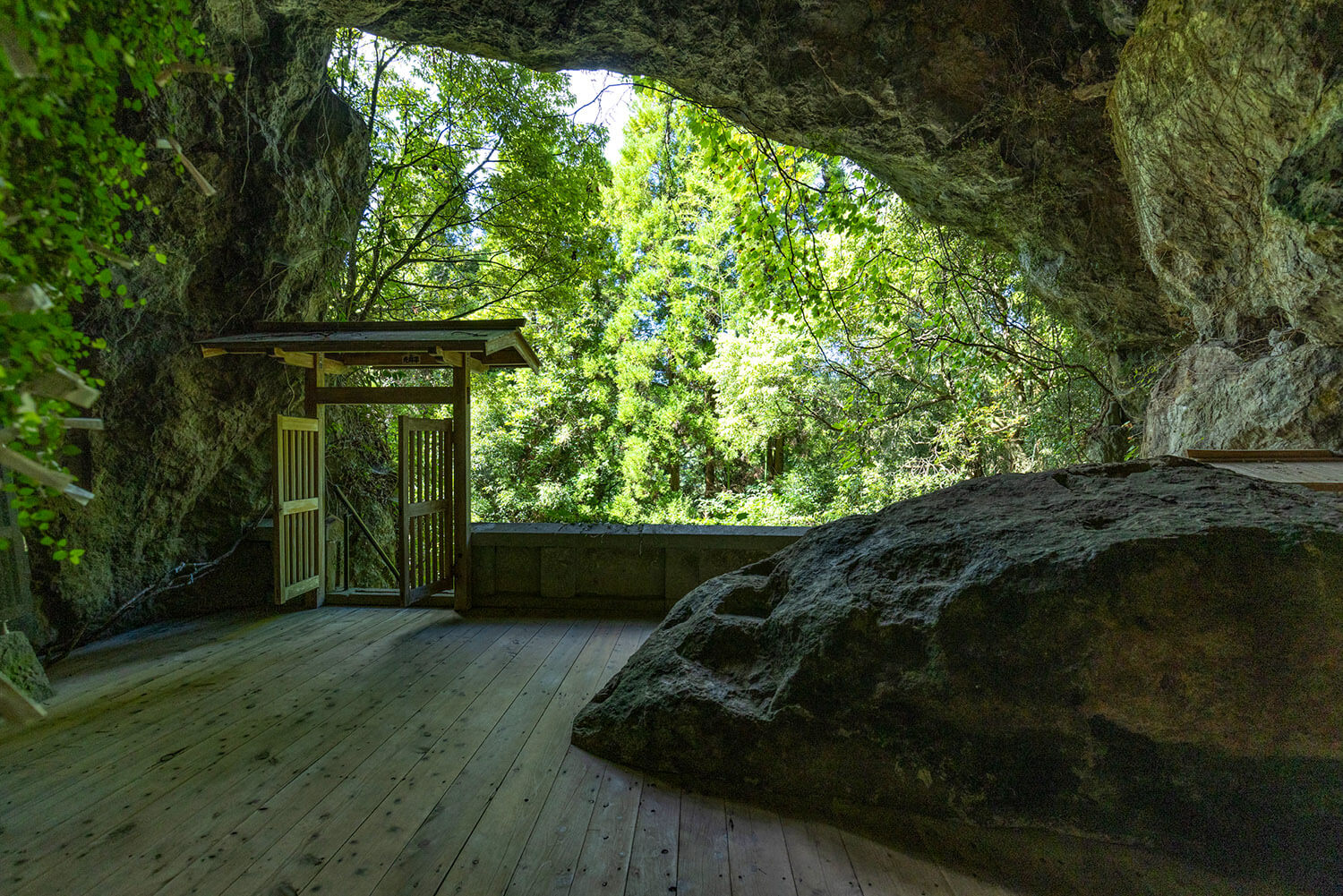
This cave is located in the grounds of Ungan Zenji Temple, which stands at the foot of Mt. Kinpu. The master swordsman Miyamoto Musashi was welcomed as a guest by Hosokawa Tadatoshi, the first lord of the Kumamoto domain, and spent the last five years of his life in Kumamoto. He is known for spending the last year and a half at Ungan Zenji Temple before his death, where he secluded himself in the cave and wrote the book on military strategy, "The Book of Five Rings."
Reigando Cave is covered with dense trees and has a mysterious feel, and the power of this natural cave is overwhelming. Inside the cave is a statue of Kannon known as Iwato Kannon. You can enter the cave, so why not imagine Musashi during his training?
The "Five Hundred Arhats", a spectacular sight of stone statues lined up on a rocky mountain

On the way to Reigando Cave, there is a rocky mountain where the Five Hundred Arhats are enshrined, which were donated by Kumamoto merchant Fudaya Gihei over a period of 24 years about 200 years ago. The sight of the stone statues, each with a different seated pose and facial expression, lined up on the rocky mountain is spectacular, creating a solemn and miraculous atmosphere.
Within the grounds of Ungan Zenji Temple, there are exhibits including the wooden sword used by Musashi in his duel with Sasaki Kojiro in the "Battle of Ganryu Island," hanging scrolls painted by Musashi, and copies of the Book of Five Rings. Even if you're not a Musashi fan, there's plenty to see.
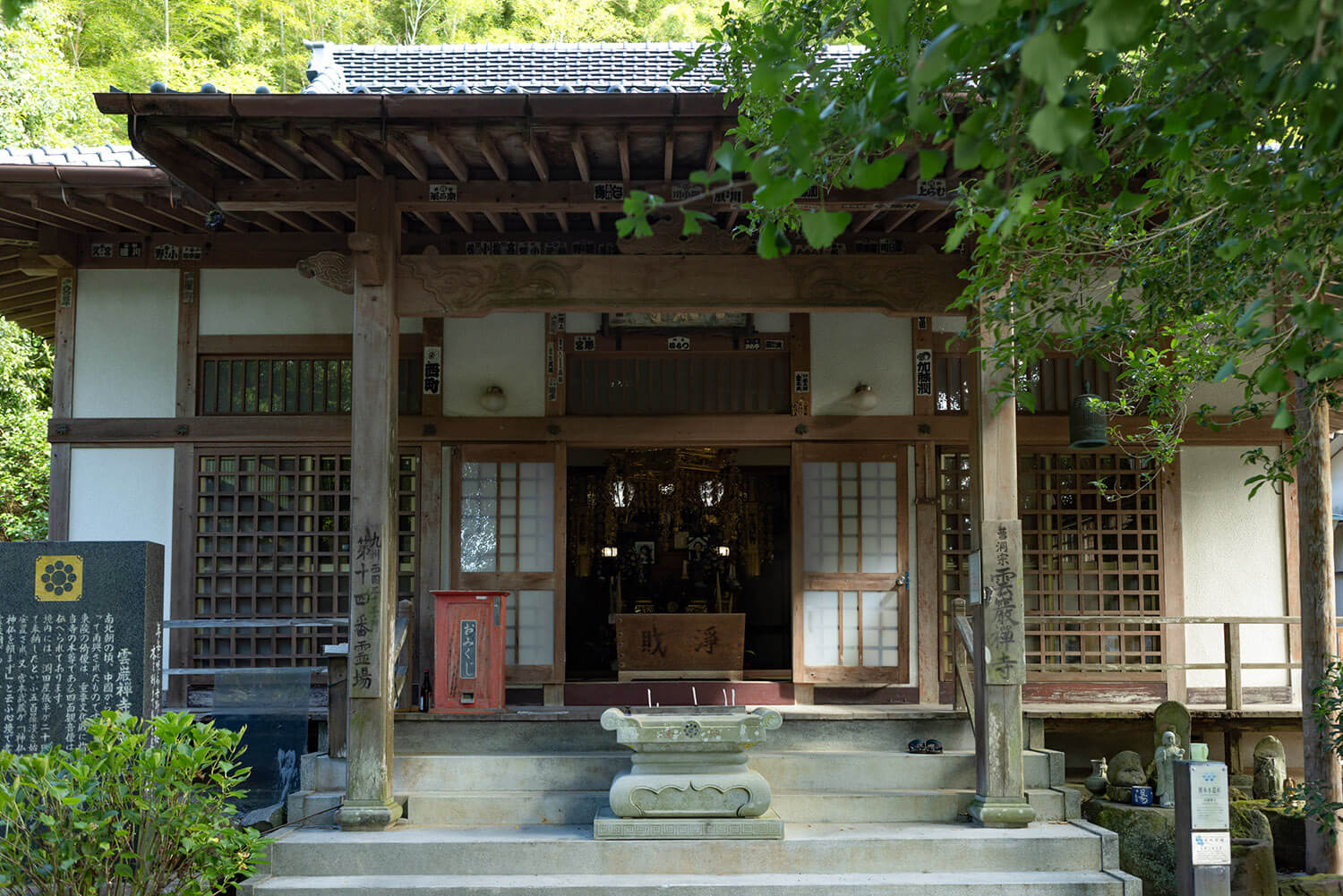
- Reigando Cave
-
 589 Hirayama, Matsuo-cho, Nishi-ku, Kumamoto City, Kumamoto Prefecture MAP
589 Hirayama, Matsuo-cho, Nishi-ku, Kumamoto City, Kumamoto Prefecture MAP
 Approximately 30 minutes by car from JR Kumamoto Station
Approximately 30 minutes by car from JR Kumamoto Station Board at Sakuramachi Bus Terminal, get off at "Iwato Kannon Entrance" and walk for about 20 minutes
Board at Sakuramachi Bus Terminal, get off at "Iwato Kannon Entrance" and walk for about 20 minutes 8:00〜17:00
8:00〜17:00 Open daily
Open daily Adults: 300 yen, high school students: 200 yen, junior high school students and younger: 100 yen
Adults: 300 yen, high school students: 200 yen, junior high school students and younger: 100 yen 096-329-8854(雲巌禅寺)
096-329-8854(雲巌禅寺) free
free
7Sauna and natural hot spring lux
The western mecca of the sauna world, admired by sauna lovers all over the country
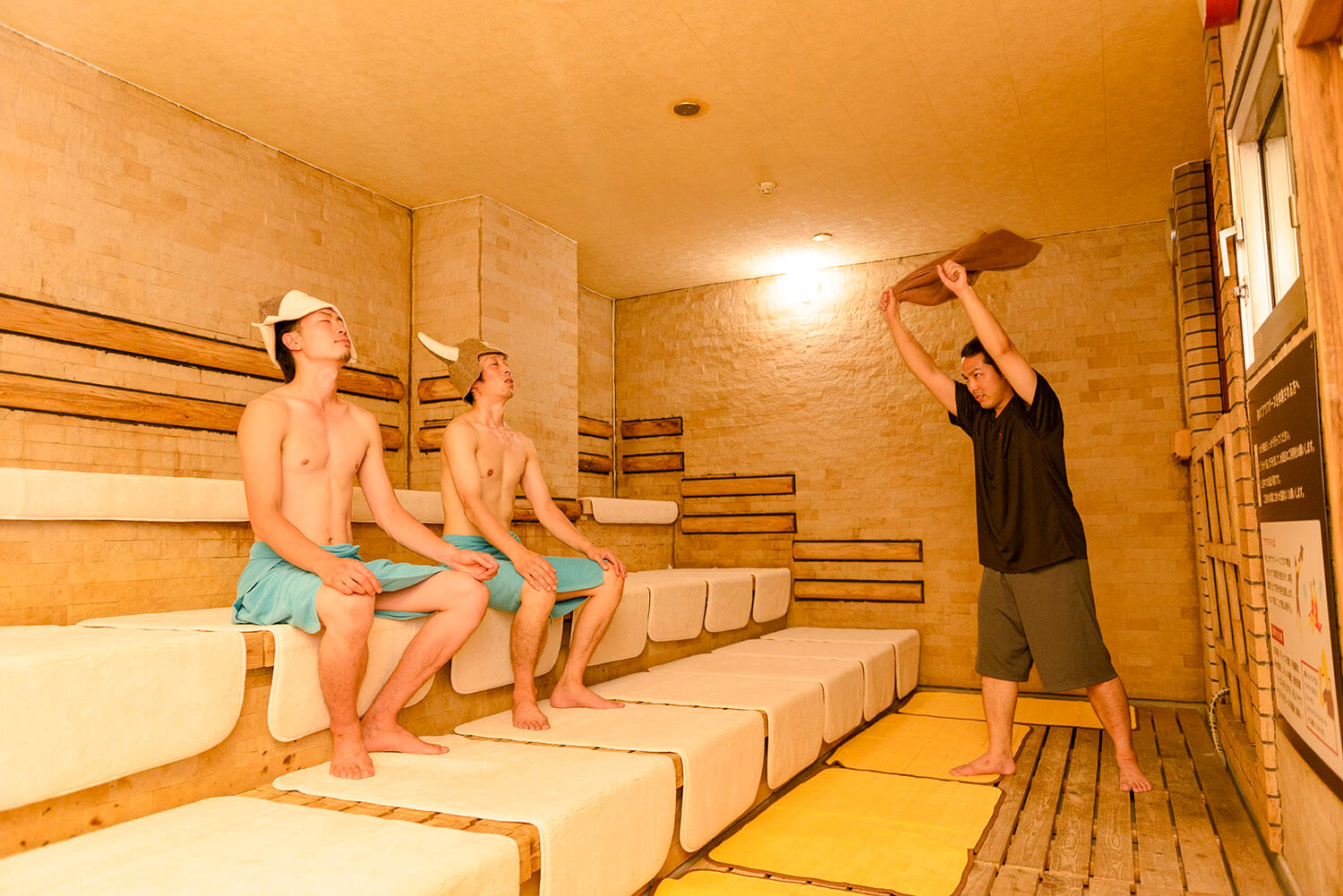
It goes without saying that this is a sauna Property that represents Kyushu and is well-known among sauna enthusiasts. The reason it is called the Holy Land of the West is because of the extensive facilities that allow you to enjoy the ultimate relaxation, including a wide variety of saunas and a deep water bath that you can immerse yourself in up to your head.
There are three types of saunas: the "Classic Sauna" set at around 90 degrees Celsius, the "Meditation Sauna" where you can enjoy self-loyly in a calm space, and the "Oaso Great Eruption Meditation Sauna" which is a steam type set at low temperature and high humidity. You can choose according to your preference and mood and enjoy the charm of the sauna at your own pace.
Cool down your body after the sauna with ice-cold natural water.
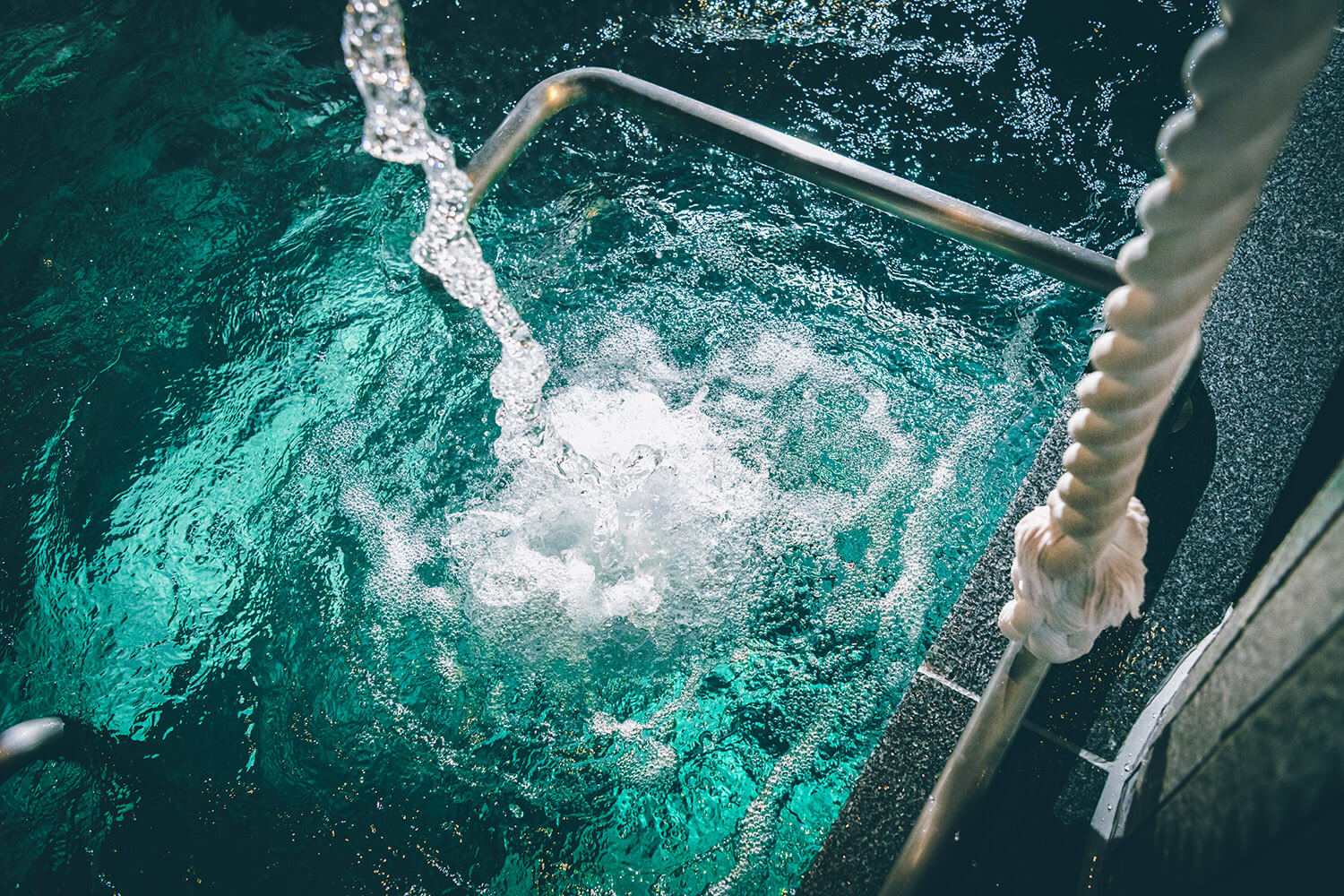
After enjoying the sauna, head to the cold water bath, which uses plenty of Aso's underground water. Not only is the water quality good, but the men's cold water bath is 171cm deep at its deepest, and the women's is 153cm deep, so first-time visitors will surely be surprised by its depth. Most Property prohibit you from immersing your head in the cold water bath, but here it's no problem at all. Your body, which has been steamed to every corner in the sauna, will be gently enveloped in the soft, plentiful spring water. Once you experience it, you'll want to come back again and again.
Not only the sauna, but also the quality of the cold water baths is something that only Kumamoto City can offer, as all of its tap water comes from natural groundwater. Let your whole body soak in the charms of Kumamoto and relieve the fatigue of your travels.

- Sauna and natural hot spring lux
-
 722 Honjo-cho, Chuo-ku, Kumamoto City, Kumamoto Prefecture MAP
722 Honjo-cho, Chuo-ku, Kumamoto City, Kumamoto Prefecture MAP
 Approximately 7 minutes walk from JR Heisei Station
Approximately 7 minutes walk from JR Heisei Station 24 hours (bathing is not available between 8:00 and 10:00 due to cleaning)
24 hours (bathing is not available between 8:00 and 10:00 due to cleaning) Open everyday (closed twice a year for maintenance)
Open everyday (closed twice a year for maintenance) Bathing: Adults 900 yen and up, Children 300 yen
Bathing: Adults 900 yen and up, Children 300 yen
Free course (bathing, towel, indoor wear, paid space on the second floor, Restaurant use) Adults from 1,650 yen, children 300 yen 096-362-1126
096-362-1126 free
free
8Yakumo Koizumi's former residence in Kumamoto
A glimpse into the life of Lafcadio Hearn, a writer who loved Japan
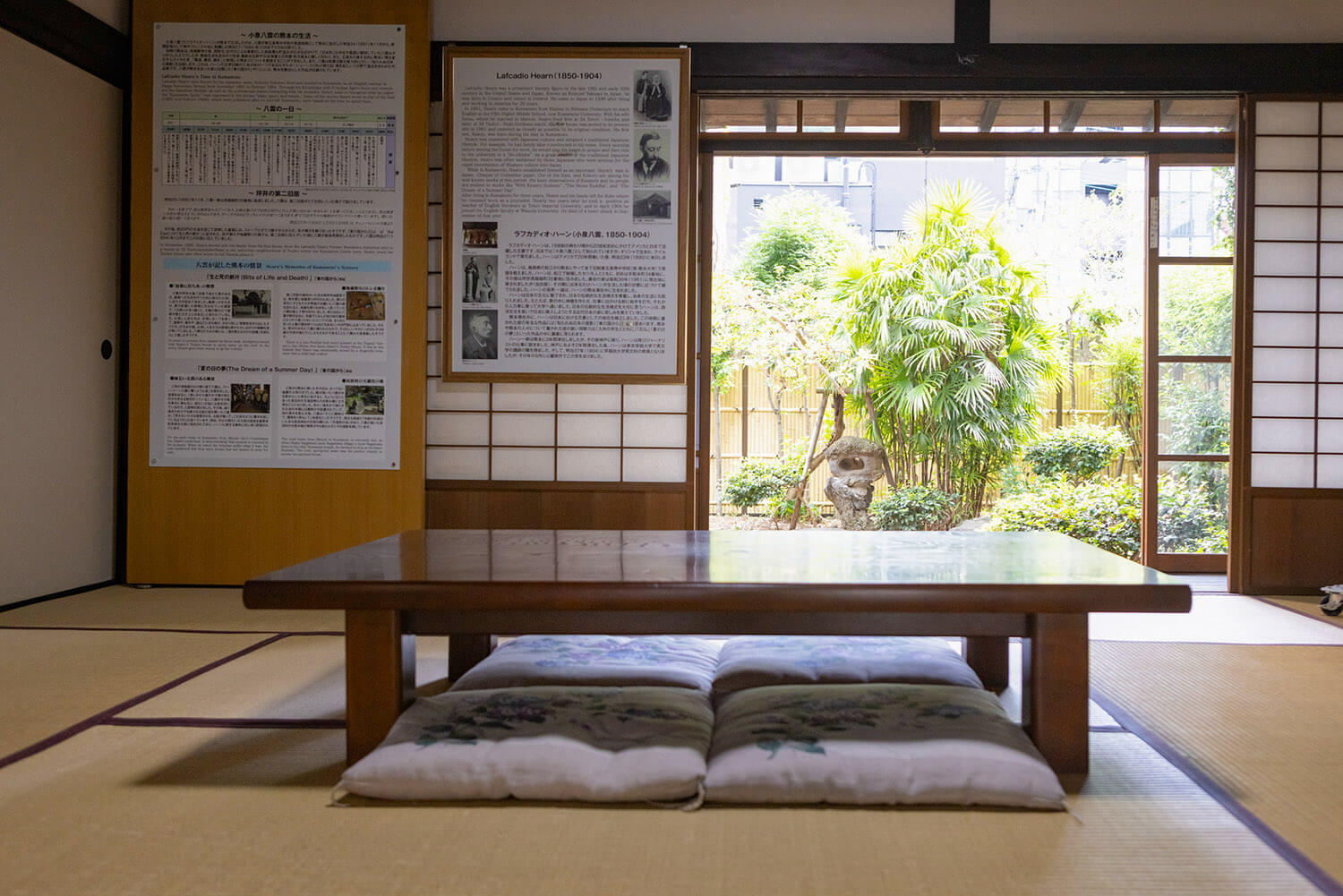
Koizumi Yakumo (Lafcadio Hearn), known as the author of the ghost stories "Hoichi the Earless" and "Snow Woman," spent his first year in the house where he was appointed as an English teacher at the Fifth Senior High School, the predecessor of Kumamoto University, in 1891 (Meiji 24). This house has been preserved as a memorial museum.
The current building was dismantled and restored when it was relocated in 1993, but the inside is still as it was back then. His favorite desk and chair, as well as the Shinto altar where he would clap his hands in prayer every morning, are still there, giving a vivid impression of Yakumo's life in Kumamoto, and his deep love of Japanese culture and spirit.
Many of the works were created from his life in Kumamoto
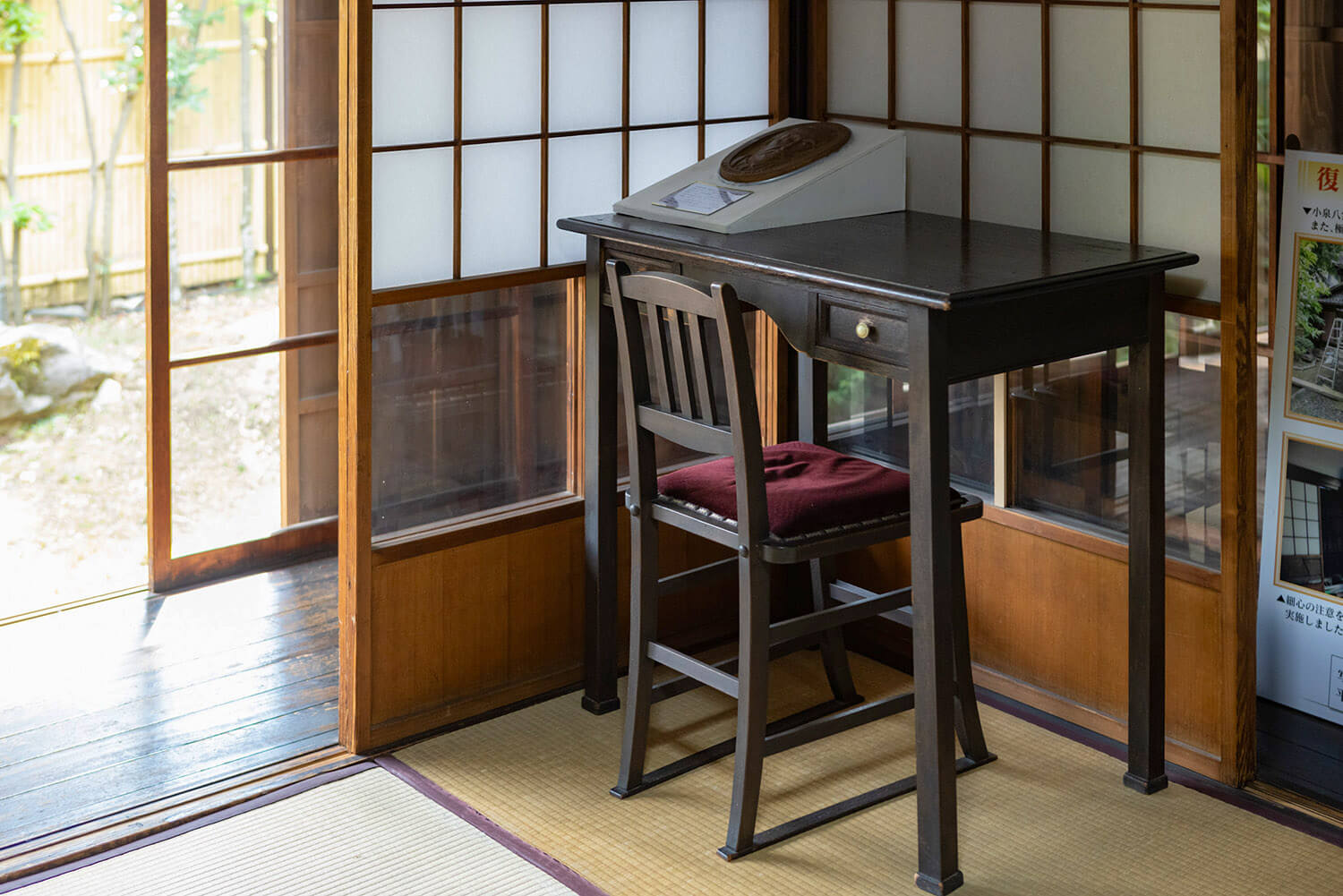
During his three-odd years in Kumamoto, Hearn wrote many works, including "Unknown Faces of Japan" and "From the East," which were inspired by Experience there. He loved Japanese culture, had a family here, and died here. He is said to have been more Japanese than most Japanese people.
At the memorial museum, you can learn about his life in Kumamoto and Japan, as well as his life before coming to Japan and his upbringing. It is located in the center of the downtown area, so it is recommended to stop by during your shopping trip.
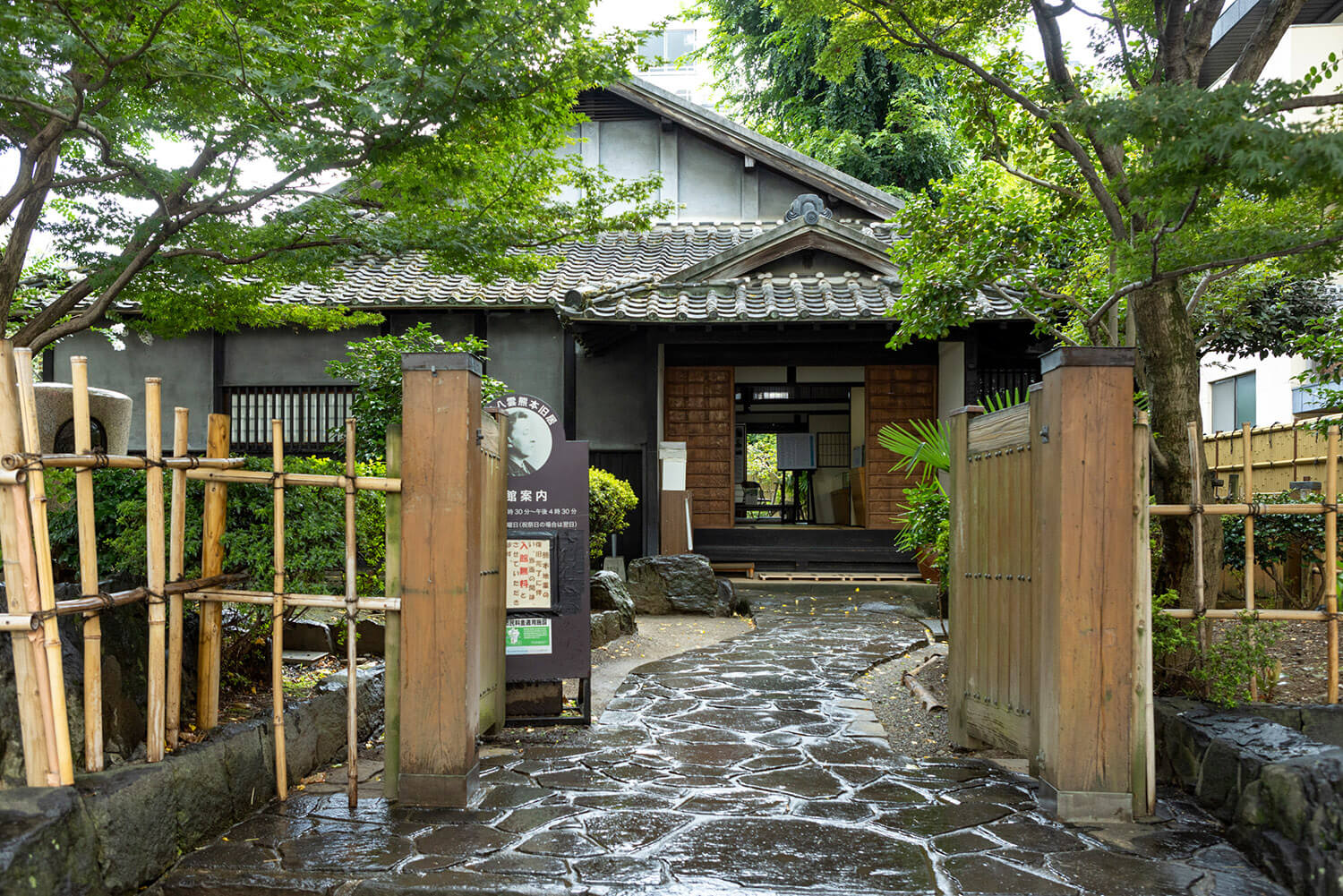
- Yakumo Koizumi's former residence in Kumamoto
-
 2-6 Anseicho, Chuo-ku, Kumamoto City, Kumamoto Prefecture MAP
2-6 Anseicho, Chuo-ku, Kumamoto City, Kumamoto Prefecture MAP
 About 3 minutes walk from the tram stop "Torimachi-suji"
About 3 minutes walk from the tram stop "Torimachi-suji" 9:30〜16:30
9:30〜16:30 Mondays (or the following weekday if Monday is a public holiday), New Year's holiday
Mondays (or the following weekday if Monday is a public holiday), New Year's holiday Free admission
Free admission 096-354-7842
096-354-7842 None
None
MAP






